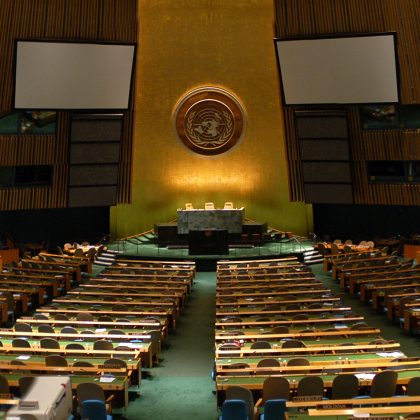Adding Ireland to the Analysis – Ireland’s impact on the ‘Decade of Reform’
Read Jay Roszman’s recent article, ‘Ireland as a Weapon of Warfare’: Whigs, Tories, and the problem of Irish outrages, 1835 to 1839‘ in The Historical Journal.
In the aftermath of the referendum for the United Kingdom (UK) to leave the European Union (EU) many commentators acknowledged the profound social fractures the vote highlighted in British society. Cosmopolitan cultural centers with diverse populations – for example large sections of London – voted overwhelmingly to ‘Remain’, while the rural heartland or Northern post-industrial cities of England voted to ‘Leave’. Voting for the UK to exit the EU has been understood as a sort of protest, as many people in the rural and poorer parts of England have felt excluded from both the economic prosperity of cultural centers like London, but also from the levers of power.[1]
Subsequent voting data has confirmed a correlation between age, educational attainment, and ethnicity on a voter’s likelihood to cast their ballot for ‘Leave’ or ‘Remain’.[2]
Brexit has also confirmed another important division in British politics – that for complex reasons of history and culture the Celtic fringe of Scotland and Northern Ireland voted to ‘Remain’. The potential consequences for the peace process in Northern Ireland seem to have been largely ignored, as Theresa May’s Conservative government have scrambled to assure the public there will be no return to a ‘hard’ border between north and south. Northern Ireland’s largest nationalist party, Sinn Féin, have used the UK’s impending exit from the EU as an opportunity to refocus on the question of Irish (re)unification. In the meantime, record numbers of residents of Northern Ireland are asserting their Irish identity to gain Republic of Ireland passports and retain access to the privileges of EU membership.
Although Brexit may be far away historically from the early nineteenth century, it highlights a salient historical question worth posing: How does adding Ireland into one’s analysis of British politics and culture complicate the picture? My research aims to do this by demonstrating how Ireland was used during the ‘Decade of Reform’ by members of the Conservative Party to unseat their political opponents, Lord Melbourne’s Whig government. Melbourne’s Whig party had attempted to solve many of Ireland’s most pressing problems, such as the injustice of Catholics paying tithes to the established Church of Ireland, or the lack of government patronage for Catholics, by proposing legislation in parliament. These reforms were considered threatening to Conservatives in Ireland who historically benefitted from the Protestant nature of British governance in a majority Catholic country. As a result, the Whigs’ legislative agenda broke apart against the shoals of Conservative opposition in the House of Lords. In a largely overlooked, but consequential vote in March 1839, Conservative peers, led by the Anglo-Irish ultra-Tory Lord Roden, proposed to create a government inquiry into how the Whig government had dealt with agrarian violence in Ireland – so-called ‘outrages’. The committee sat over the summer months of 1839 gathering evidence suggesting that the Whig party were guilty of an early nineteenth century version of being ‘soft on crime’.
The Lords did end up censuring the Whig Lord Lieutenant, Lord Normanby, but Whig government did not fall apart. Why not? In short, the answer lies in Ireland’s place in uniting a disparate political coalition of Whigs, English radicals, and Daniel O’Connell’s Irish faction. In other words, the Whigs’ Irish policy, largely overlooked by historians, offers an important insight into how the Whigs held onto government benches for another two years.
In the 1970s, right as the UK entered the EU, the historian J.G.A. Pocock argued that to make sense of British history practitioners needed to employ an approach that incorporated all four nations of the ‘Atlantic archipelago’.[3]
It only seems appropriate that as the UK bids farewell to the EU, despite opposition in Scotland and Northern Ireland, that historians continue to think about how incorporating all four nations into their analysis of Britain’s history presents a more dynamic and accurate picture of the past.
Main image credit: © National Portrait Gallery, London
[1] Peter Mandler, ‘Britain’s London Problem’, [accessed 22 March 2017].
[2] Martin Rosenbaum, ‘Local voting figures shed new light on EU referendum’, [accessed 22 March 2017].
[3] J.G.A. Pocock, ‘British History: A Plea for a New Subject’, Journal of Modern History 47 (1975), p. 606.






